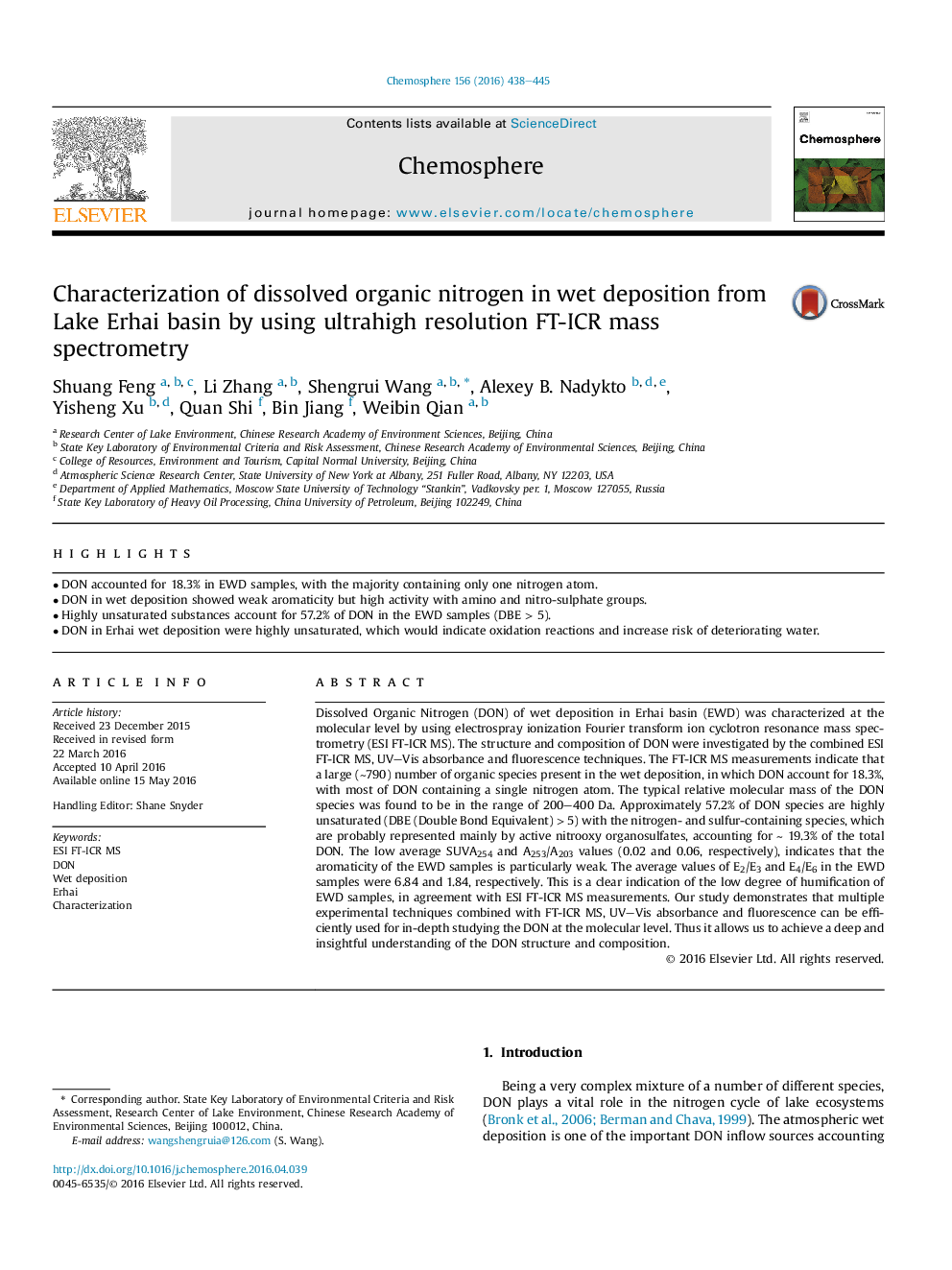| Article ID | Journal | Published Year | Pages | File Type |
|---|---|---|---|---|
| 4407745 | Chemosphere | 2016 | 8 Pages |
•DON accounted for 18.3% in EWD samples, with the majority containing only one nitrogen atom.•DON in wet deposition showed weak aromaticity but high activity with amino and nitro-sulphate groups.•Highly unsaturated substances account for 57.2% of DON in the EWD samples (DBE > 5).•DON in Erhai wet deposition were highly unsaturated, which would indicate oxidation reactions and increase risk of deteriorating water.
Dissolved Organic Nitrogen (DON) of wet deposition in Erhai basin (EWD) was characterized at the molecular level by using electrospray ionization Fourier transform ion cyclotron resonance mass spectrometry (ESI FT-ICR MS). The structure and composition of DON were investigated by the combined ESI FT-ICR MS, UV–Vis absorbance and fluorescence techniques. The FT-ICR MS measurements indicate that a large (∼790) number of organic species present in the wet deposition, in which DON account for 18.3%, with most of DON containing a single nitrogen atom. The typical relative molecular mass of the DON species was found to be in the range of 200–400 Da. Approximately 57.2% of DON species are highly unsaturated (DBE (Double Bond Equivalent) > 5) with the nitrogen- and sulfur-containing species, which are probably represented mainly by active nitrooxy organosulfates, accounting for ∼ 19.3% of the total DON. The low average SUVA254 and A253/A203 values (0.02 and 0.06, respectively), indicates that the aromaticity of the EWD samples is particularly weak. The average values of E2/E3 and E4/E6 in the EWD samples were 6.84 and 1.84, respectively. This is a clear indication of the low degree of humification of EWD samples, in agreement with ESI FT-ICR MS measurements. Our study demonstrates that multiple experimental techniques combined with FT-ICR MS, UV–Vis absorbance and fluorescence can be efficiently used for in-depth studying the DON at the molecular level. Thus it allows us to achieve a deep and insightful understanding of the DON structure and composition.
